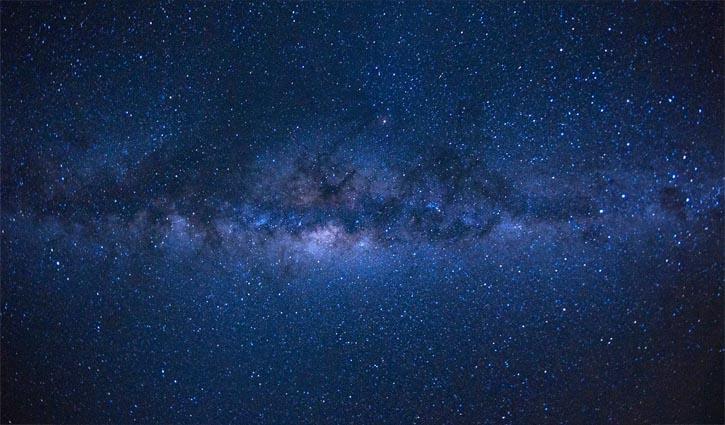How sound is providing new clues about the Universe
|| risingbd.com

Where the human eye can pick out only the 5,000 brightest stars in the sky, the world's telescopes observe trillions. Other instruments detect black hole accretion discs, gravitational waves, pulsars, quasars, exoplanets, as well as indirect evidence of invisible phenomena like dark matter and dark energy.
Astronomers are drowning in data. On the ground and in space, artificial eyes peer out in every direction from Earth. This wealth of observational data often leads to spectacular images that populate astronomy journals and websites. But a growing number of astronomers are now also analysing it using sound. Through "data sonification", they convert numbers into audible tones, chirps and hums to augment their intuitive experience of the invisible universe.
"Some data is very difficult to visualise," says Anita Zanella, an astronomer at Italy's National Institute for Astrophysics. Zanella studies galaxy formation and structure. Her research often involves correlating more variables and parameters than a data visualisation can accommodate. "One thing we can do is have an image, and then add sound. You see the shape of a galaxy, and then 'listen' to its brightness or velocity. This would help us make sense of it."
Just as scientists use colour, shape, and size to visually represent different types of data, they can use timbre, volume, pitch, spacialisation and other sound qualities to expand the parameter space.
"We cannot directly hear the sound, but we can arbitrarily associate sounds to data. After all, that's what we do with images," Zanella says.
In addition to opening new avenues for research and knowledge creation, data sonification also creates new entry points into professional and amateur astronomy, both for people with visual impairments, and also for people who interpret sounds more easily than pictures.
"Asking people to use only one sense is limiting," says Nic Bonne, a visually impaired astronomer at the University of Portsmouth, UK. Born with retina damage, Bonne grew up in rural Australia, devouring his family's descriptions of the night sky. Astronomy became first his passion, then his career.
"People think of astronomy as a visual science, but that doesn't necessarily make sense," he says. "Most of the Universe is outside the visible spectrum, we're observing X-ray, radio waves, or ultraviolet radiation. For people who are visually impaired or blind, data sonification can give them access. Sometimes it just makes sense to turn things into sound. Sometimes listening for a pattern yields better results than looking for it."
Hundreds of research and outreach projects currently use sonified data from astronomy to offer more people more ways to explore the invisible Universe.
Here are a few examples:
Black hole hums
Around 240 million years ago, a black hole deep in the Perseus galaxy cluster was going about its business, devouring its accretion disc, and creating huge pressure waves in the surrounding superheated gas. These waves sent an electromagnetic "light echo" across the universe. In 2013, Nasa's Chandra X-ray Observatory detected these pulses in a range of the electromagnetic spectrum invisible to human eyes.
MIT physicist Erin Kara was part of the team who turned these light echoes into sound. The resulting hum felt eerie and powerful, as though it might actually be the kind of sound a hungry black hole made.
The recording made esoteric astrophysics evocative and relatable. "It's something people can know," says Kara. "It's helpful being able to explain it in terms of things that people know – not red shifts or blue shifts or doppler shifts, but things that people can feel in their everyday life."
The chirp heard around the world
When binary supermassive black holes spiral into one another, gravitational waves emanate at higher and higher frequencies as cataclysm approaches.
Gravitational waves stretch and compress space itself. Human beings have no sensory organ attuned to these waves. Instead, we have Laser Interferometer Gravitational-wave Observatories (LIGOs). At facilities in Louisiana and Washington State, scientists send twin beams of light along two vacuum chambers, each 4km (2.5 miles) long and oriented at right angles to one another. Gravitational wave effects are observed by measuring the differences between the beams at a scale of a 10,000th the diameter of an atomic nucleus.
In 2015, LIGO first recorded the waves of a billion-year-old black hole collision. The sonification of their increasing frequency sounded like a short, rising chirp.
"It was one of the first times the public became aware of the possibility of learning about astronomy through a different sense than sight," says Zanella. "I think that chirp triggered the curiosity and imagination of people. While images are very powerful, sound in general is more engaging."
Source: BBC
Dhaka/Mukul























